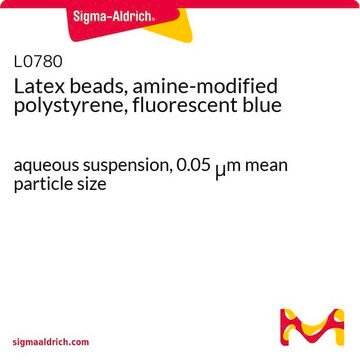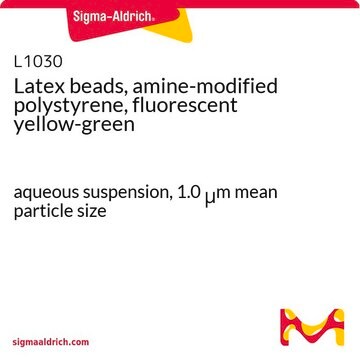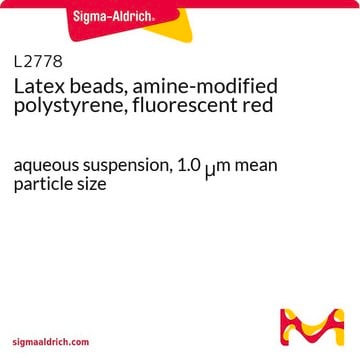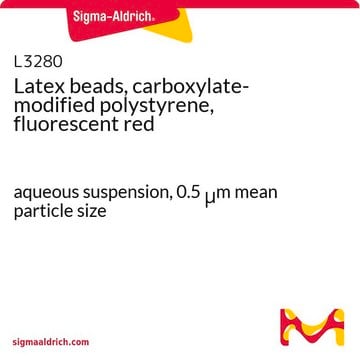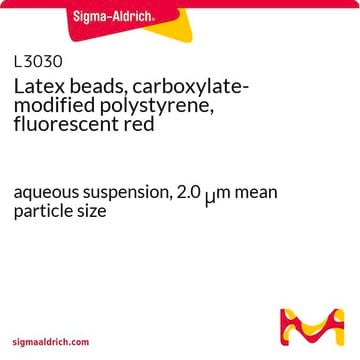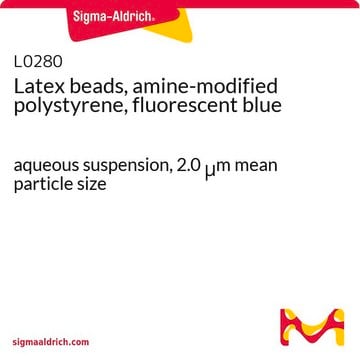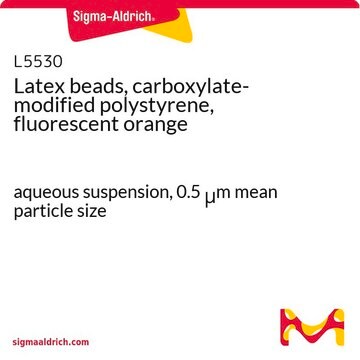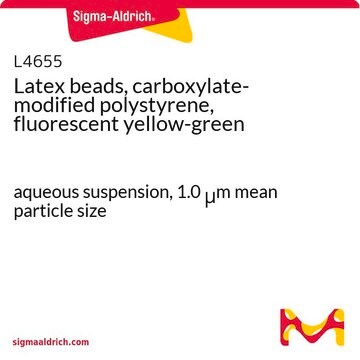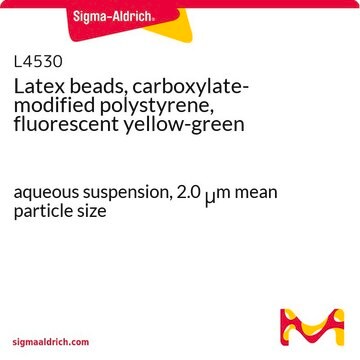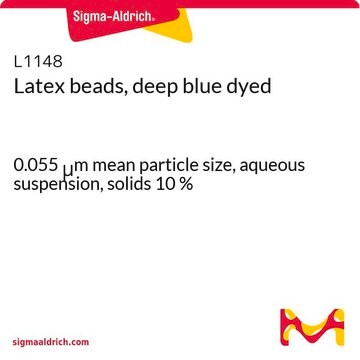Unfortunately, the molecular weight of this product is not determined.
L9904
Latex beads, amine-modified polystyrene, fluorescent orange
aqueous suspension, 0.1 μm mean particle size
Synonym(e):
Amine-Modified Latex Beads, Fluorescent Orange Beads
Größe auswählen
145,00 €
Versandbereit am07. April 2025Details
Größe auswählen
About This Item
145,00 €
Versandbereit am07. April 2025Details
Empfohlene Produkte
Form
aqueous suspension
Zusammensetzung
Solids, 2.5%
Methode(n)
cell based assay: suitable
Mittlere Partikelgröße
0.1 μm
Fluoreszenz
λex ~475 nm; λem ~540 nm
Anwendung(en)
cell analysis
Suchen Sie nach ähnlichen Produkten? Aufrufen Leitfaden zum Produktvergleich
Anwendung
Lagerklassenschlüssel
10 - Combustible liquids
WGK
WGK 3
Flammpunkt (°F)
Not applicable
Flammpunkt (°C)
Not applicable
Hier finden Sie alle aktuellen Versionen:
Besitzen Sie dieses Produkt bereits?
In der Dokumentenbibliothek finden Sie die Dokumentation zu den Produkten, die Sie kürzlich erworben haben.
Kunden haben sich ebenfalls angesehen
-
is it possible to know the molecoar weight to calculate the molarity of the suspension?
1 Antwort-
Hilfreich?
-
-
How did you verify the amine coating? What spectroscopy method have you used to verify the amine coating? Can you show the result that proves that the amine has been coated? (For example, if you have done FTIR, then can you show us the peaks)
1 Antwort-
The amine modification of these beads is validated through an extensive series of titrations. Unfortunately, the method is considered proprietary. There is no specific documentation or data available to share.
Hilfreich?
-
-
what is the concentration of polystyrene microplastic [mg/ml] in this product No. L9904
1 Antwort-
The concentration of this aqueous suspension is 2.5% w/v or 2.5g/100 mL. This equates to 25mg per 1 mL package.
Hilfreich?
-
Aktive Filter
Unser Team von Wissenschaftlern verfügt über Erfahrung in allen Forschungsbereichen einschließlich Life Science, Materialwissenschaften, chemischer Synthese, Chromatographie, Analytik und vielen mehr..
Setzen Sie sich mit dem technischen Dienst in Verbindung.